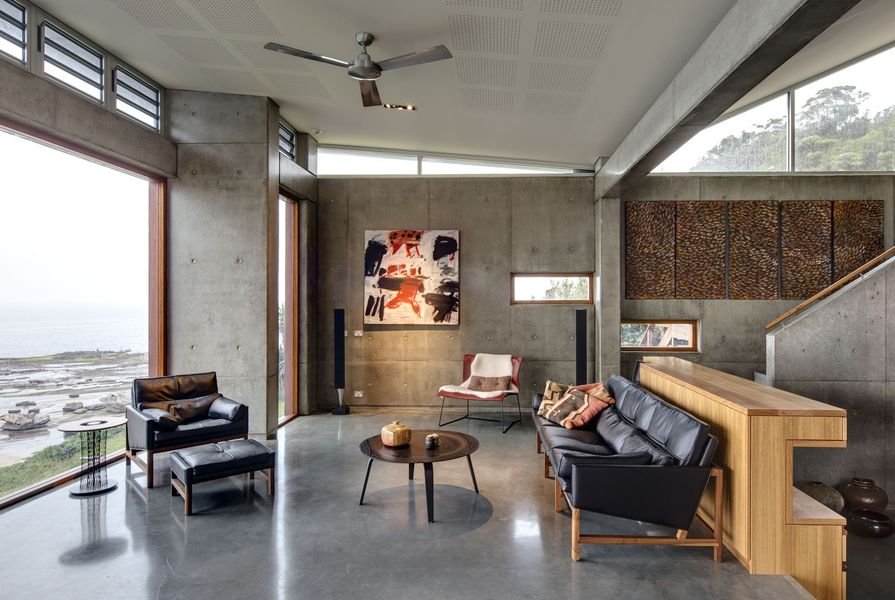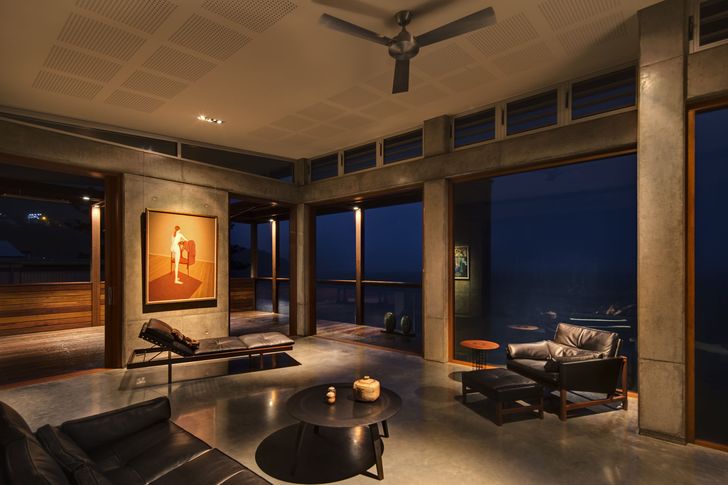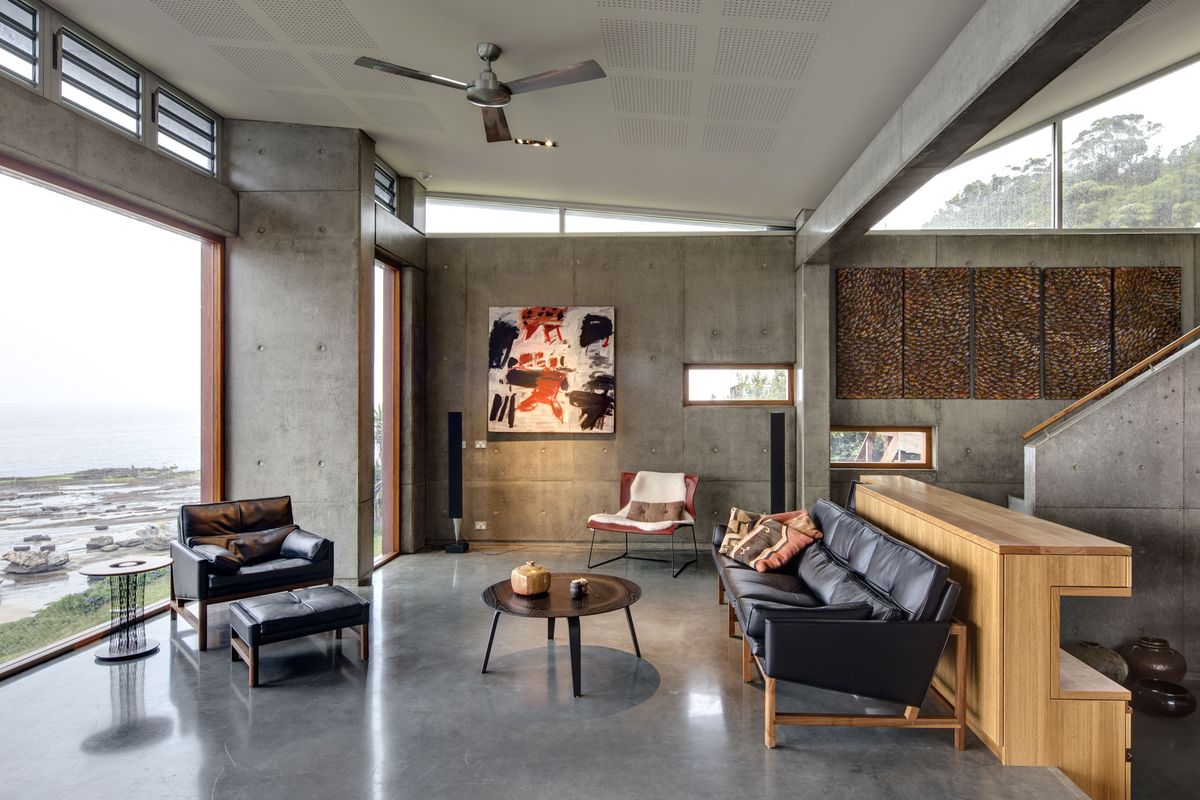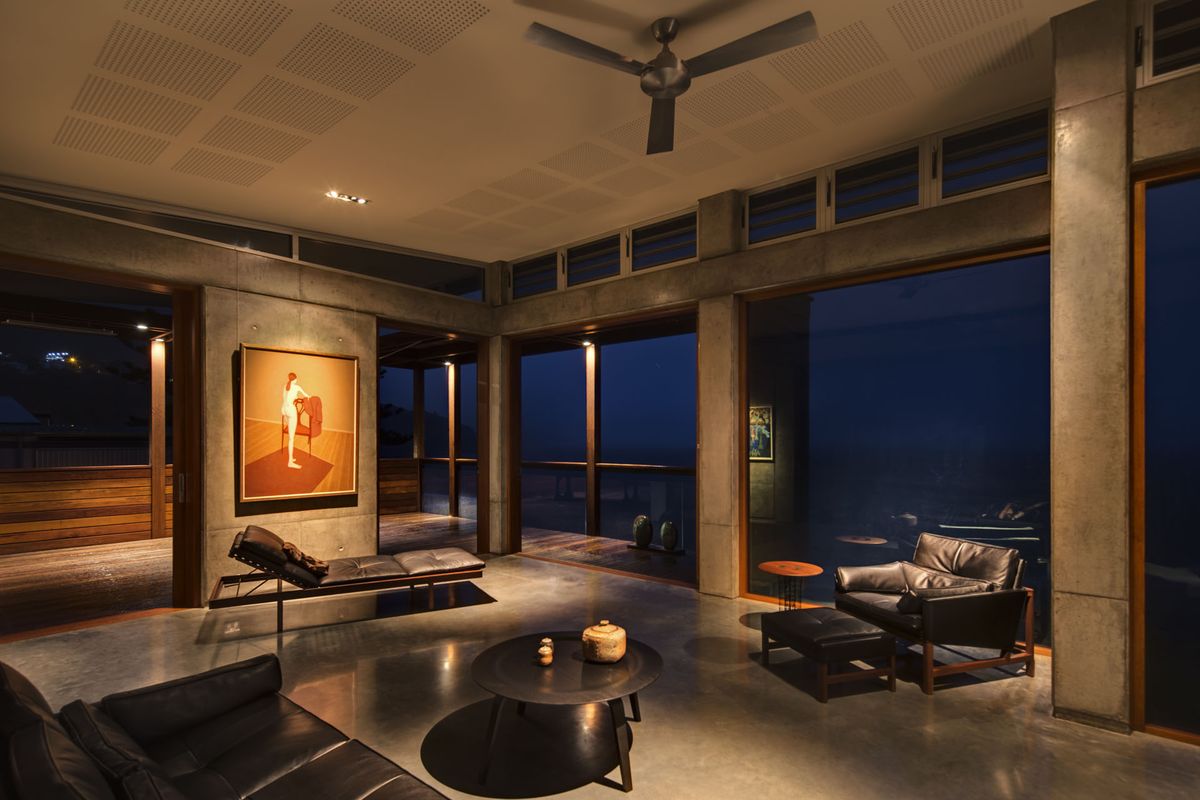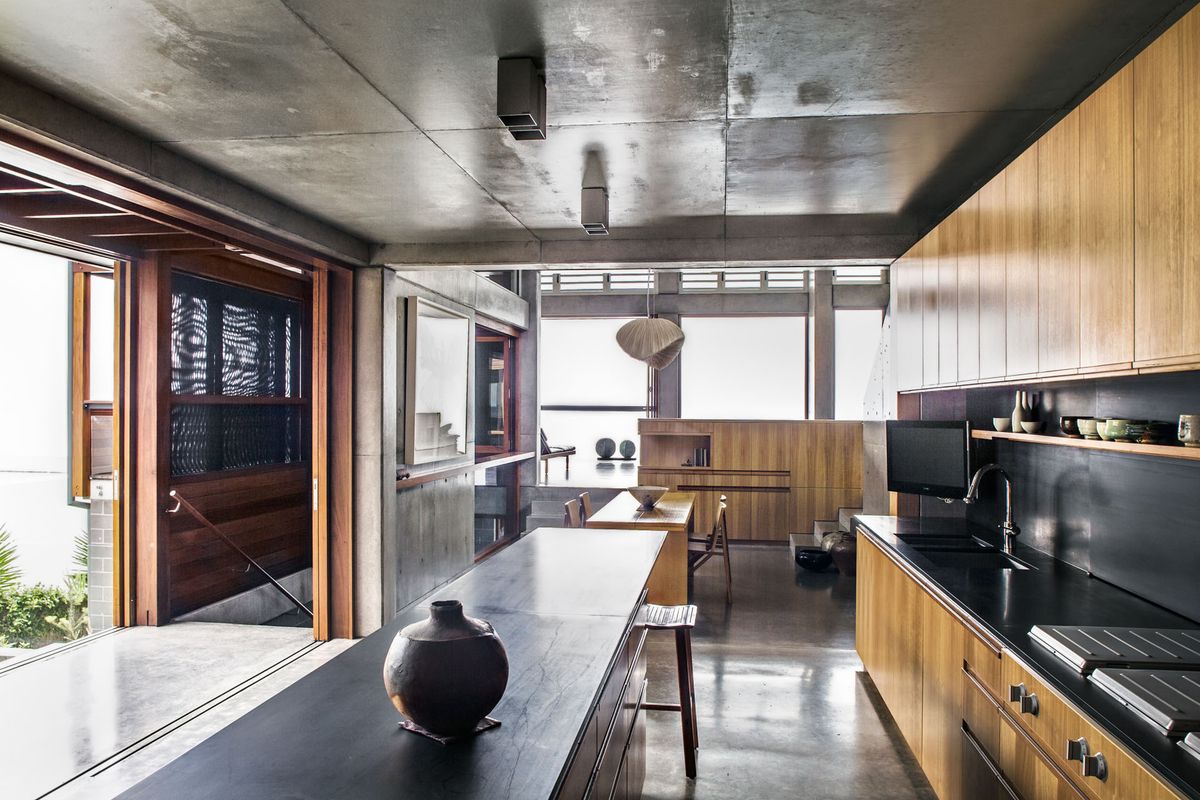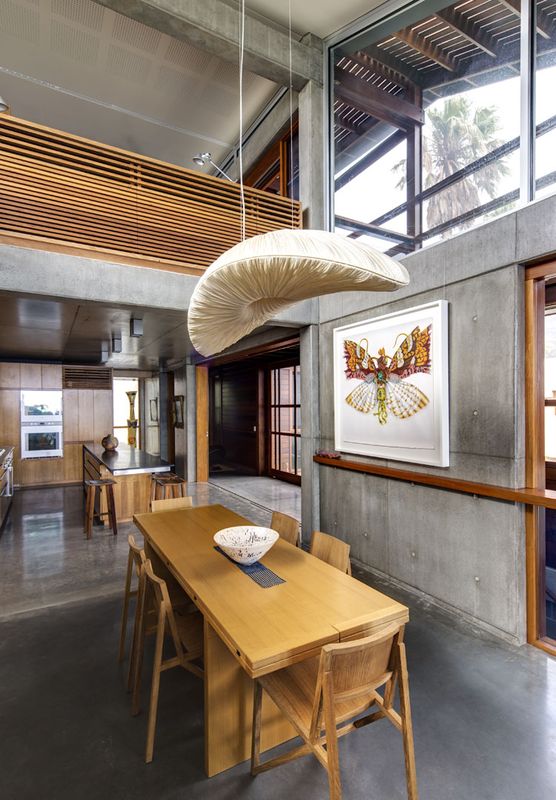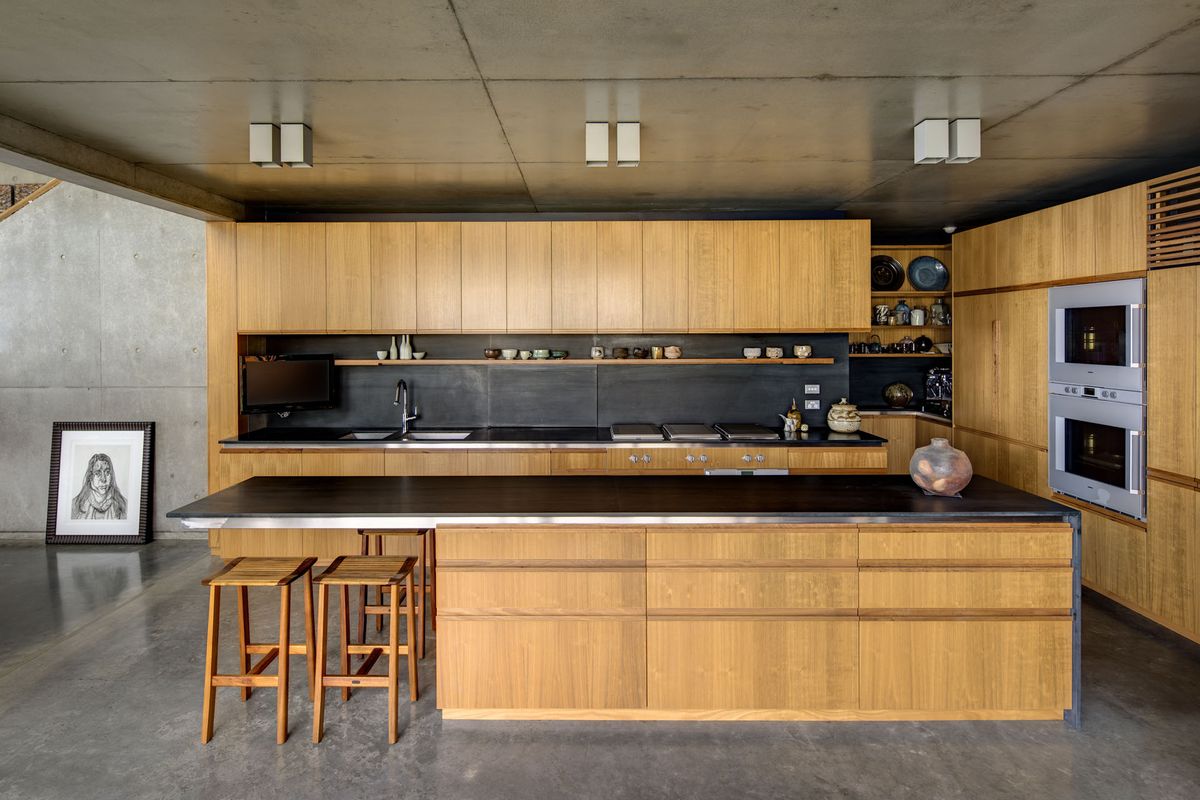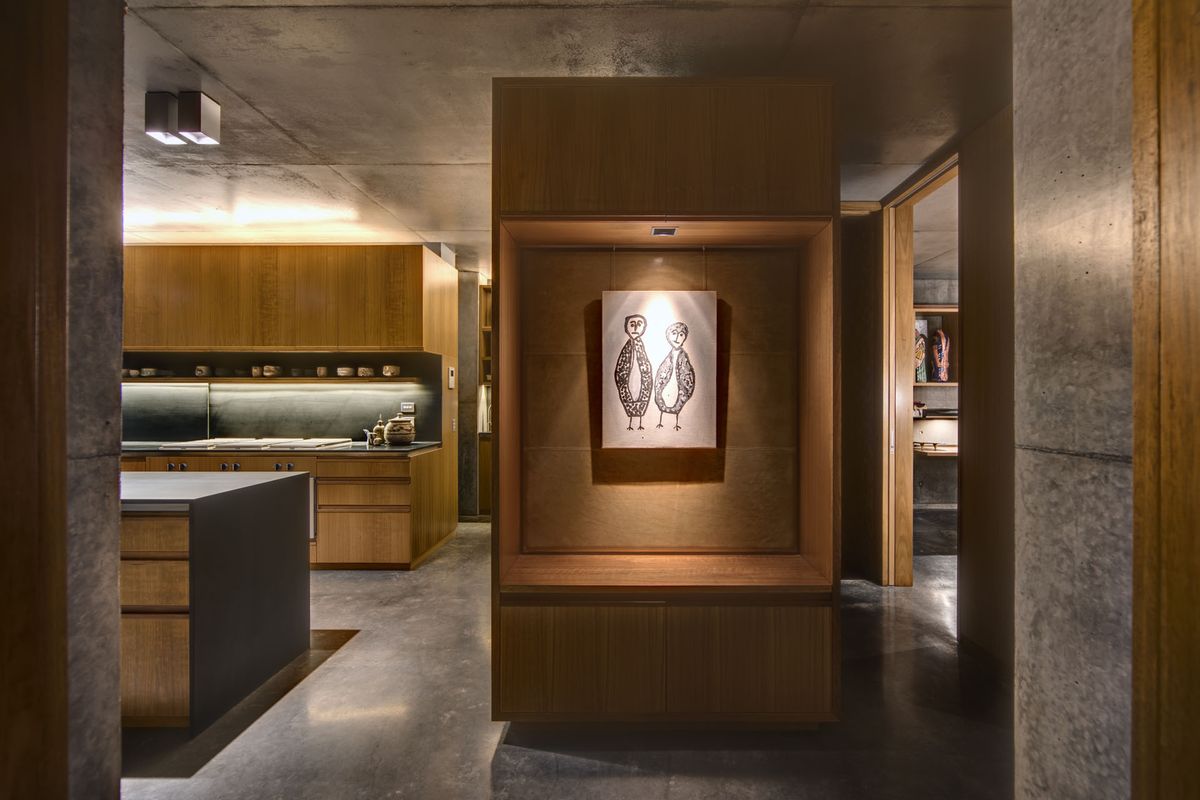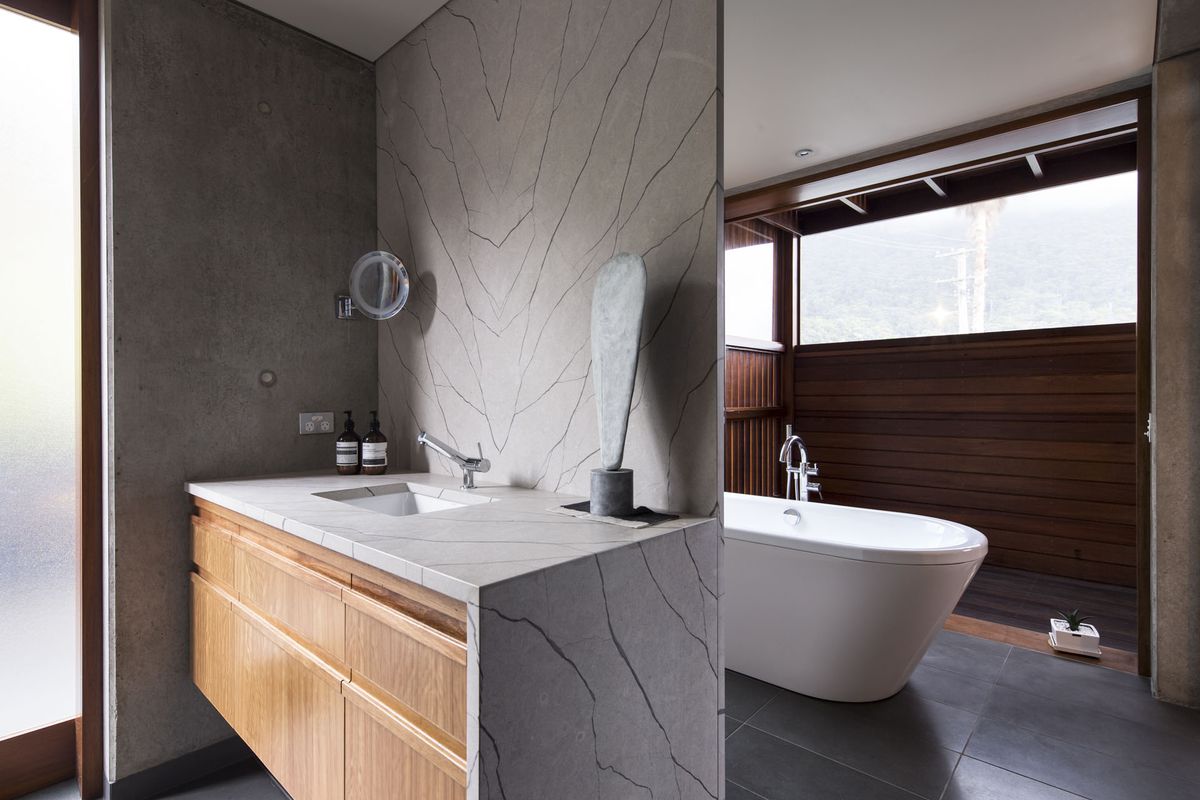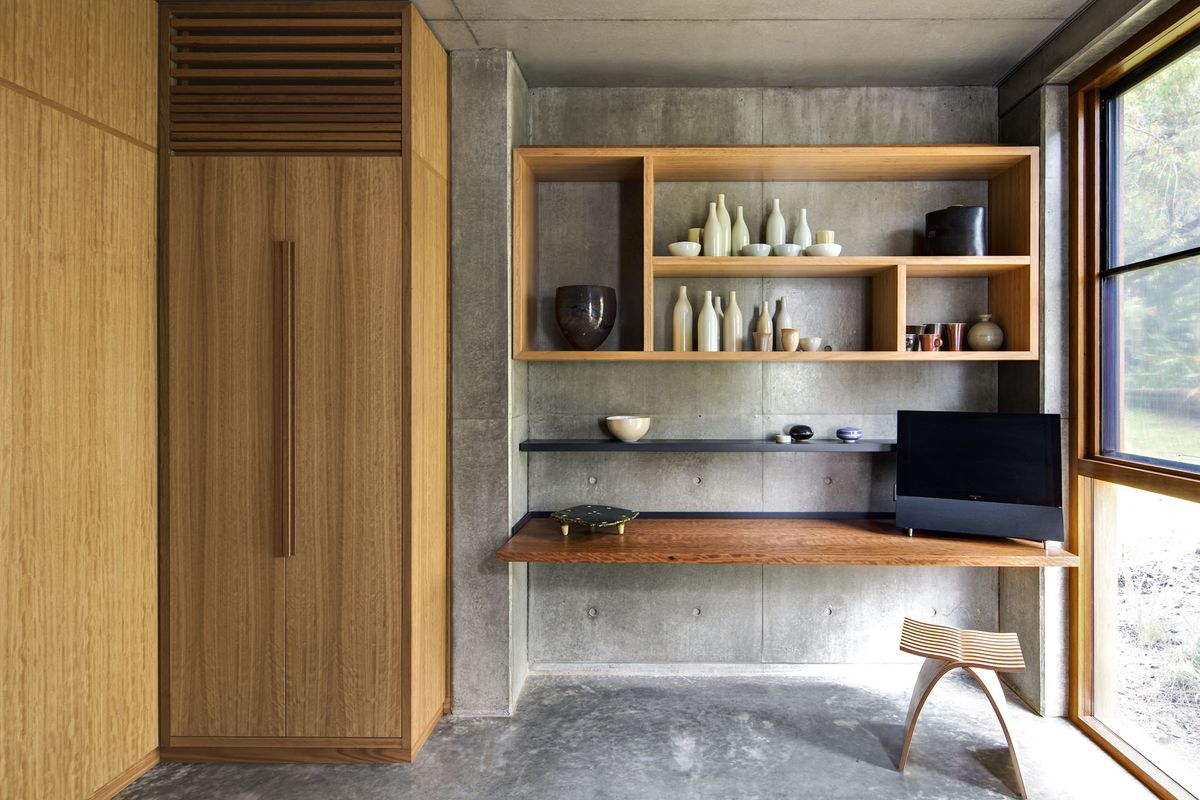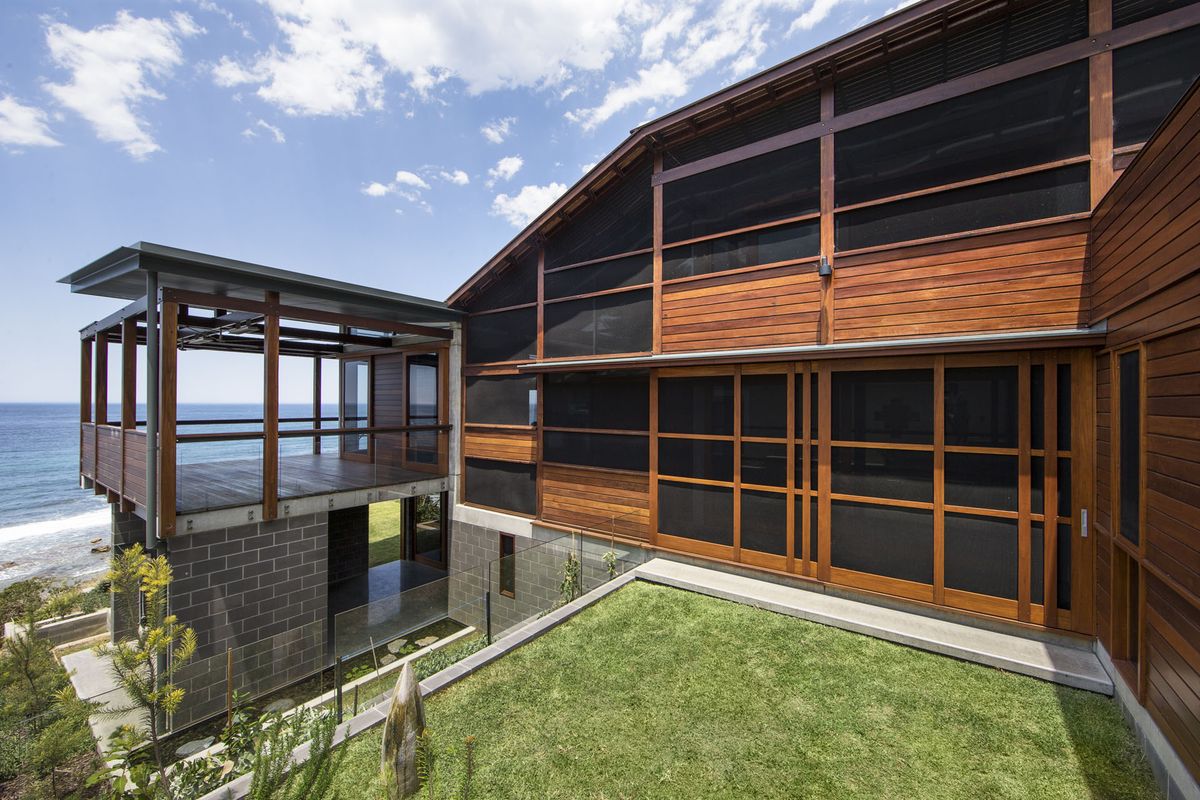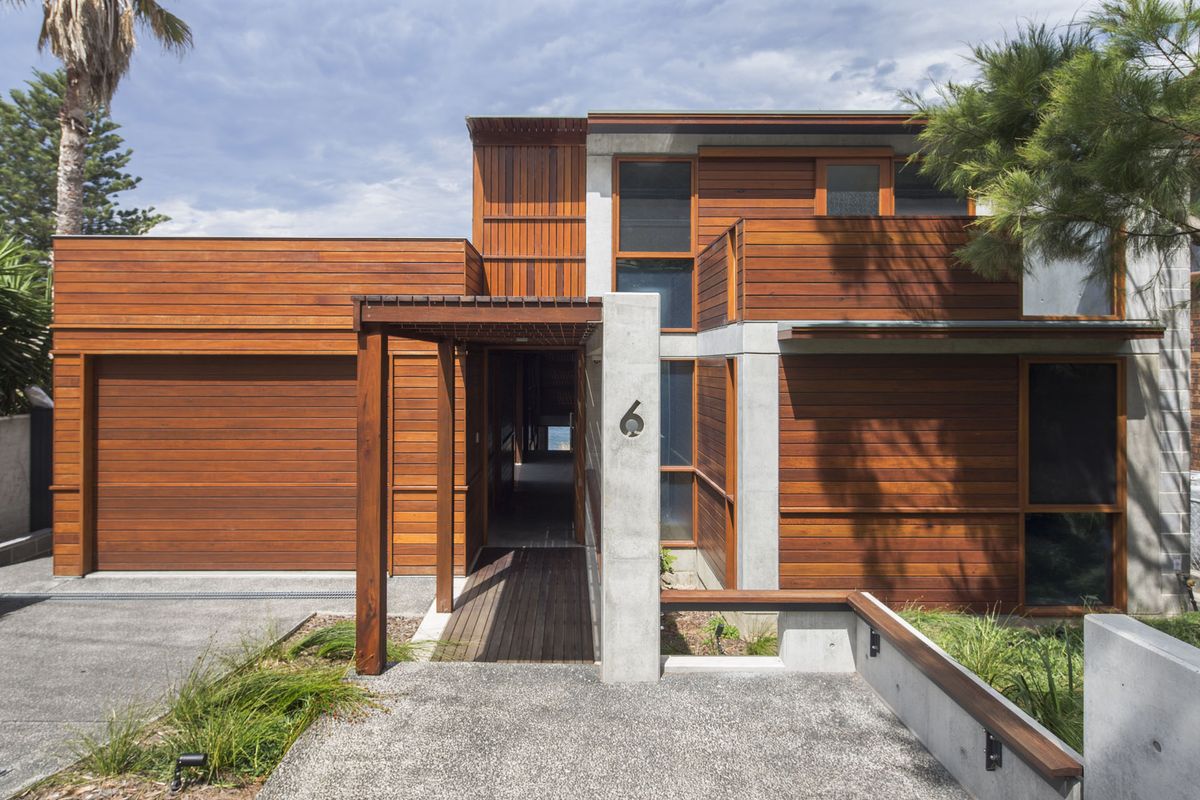When presented with her clients’ art collection, architect Shelley Indyk deliberately avoided designing them a home that looked like a gallery. It helped that she had a ruggedly exposed 500m² sloping block on the breathtakingly beautiful New South Wales coast with which to work.
“The house needed to celebrate its incredible site by having the inside and outside work together,” she explains. “It was more important to open it up and let the interior breathe than to enclose it like a gallery.”
Indyk decided to employ a concrete post-and-beam structural system, which allowed for greater flexibility in the planning. Because the walls weren’t load bearing, she was able to incorporate big, glass, Japanese-style sliding doors, blurring the boundaries between indoor and outdoor rooms. Cladding the three-levelled house in timber meant it looked not unlike the other homes in the area but, on the inside, it couldn’t be more different. Concrete walls, floors and ceilings are striking for their raw appeal and are what lend the interior its most-resounding design expression.
Concrete walls throughout the home provide a neutral backdrop for the art.
Image: Murray Fredericks
“The clients love concrete, especially work by Japanese architect Tadao Ando, and it just felt right to have a refined material palette because they own so much art,” says Indyk. While the concrete acts as a neutral backdrop for the displayed paintings, ceramics and sculpture, the resulting layout and wall configuration accommodate the diversity amongst the collection. Large ceramic bowls and vessels sit neatly in corners of the living areas, while paintings can be hung at a distance from each other to avoid overcrowding.
The overall aesthetic is elegantly modern and cohesion between the artworks, furniture and structural elements lends the interior a sense of harmony and balance. This is further reinforced by the pale blackbutt timber joinery in the ground-floor kitchen and living areas and first-floor study, which also adds warmth to the hard concrete surfaces. Indyk is influenced by the unadorned, clean-lined simplicity of Japanese design (having visited the country many times) and this is especially evident in the interior’s minimalist concept.
It makes for a surprisingly comfortable and intimate home which the clients have no intention of leaving. The couple is in their sixties and this new two-bedroomed house accommodates them easily, while also providing enough space for their two grown daughters and their respective families when they visit. And surrounding themselves with their favourite pieces of art is something they have always done. “I started collecting ceramics when I was 15 and fell in love with a silicone-glazed, faceted jar by Australian master Harold Hughan. I didn’t have enough money to buy it then and I still don’t have enough money to buy it, but I have a few of his other pieces that I really enjoy,” says one of the clients.
Mauve Nude by John Brack takes up a wall in the living area.
Image: Murray Fredericks
The couple seriously started collecting two-dimensional works about 20 years ago and has amassed an impressive group of both Australian and international artists. A highlight is John Brack’s Mauve Nude, which hangs in the lounge and is resplendent for its rich colour palette. Also included in their collection is a Francis Bacon lithograph and a number of German expressionist pieces; however, it’s the works by Aboriginal artists Rover Thomas and Maxie Tjampitjinpa that are some of the most visually compelling in the collection. Thomas’ exquisite black-and-white painting depicting two owls deservedly sits in its own little alcove next to the kitchen, while Tjampitjinpa’s large five-part Fire Dreaming dominates the outer stair wall. A black, red and white painting by renowned Australian abstract expressionist Tony Tuckson hangs to the left of this work and the two play off each other very nicely. As the client explains, “The only real criteria we have in selecting art is that we both like a work and that we would both like to live with it.”
Unfortunately, however, not all the works can be displayed, such is the size of the collection.
“Although Shelley and her team were very clever about how they utilised the space, we had to limit what we had on display and the rest is in a lower-ground-floor storeroom,” says the client. “I suppose, then, that all the things that are visible within the house are my favourites.”
A particularly special work is an intricate watercolour by Canberra-based contemporary artist eX de Medici, which hangs in the dining area. It’s a lovely complement to the pleated silk light fitting that seemingly floats above the dining table. This organically shaped form in turn reiterates the soft curves of the ceramics on display and provides a nice contrast to the interior’s hard edges.
It’s a testament to Indyk’s design concept that all artworks, although exposed, are actually not affected by the sunlight. A north-facing, stainless-steel black mesh screen, outdoor deck and generous overhang offer the necessary amount of protection. But the clients are realistic that the coastal environment is rugged and their house is very open. Their relaxed attitude only makes the stylish interior seem all the more inviting.
The South Coast House was shortlisted for a Houses Award – New Houses over 200m2 in 2013.
Source
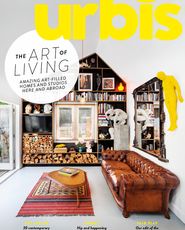
Project
Published online: 24 Nov 2014
Words:
Leanne Amodeo
Images:
Murray Fredericks
Issue
Urbis, June 2014

